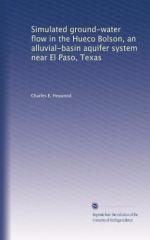|
This section contains 1,520 words (approx. 6 pages at 300 words per page) |

|
An alluvial system is a landform produced when a stream or river, that is, some channelized flow (geologists call them all streams no matter what their scale) slows down and deposits sediment that was transported either as bedload or in suspension. The basic principle underlying alluvial deposits is that the more rapidly water is moving, the larger the particles it can hold in suspension and the farther it can transport those particles.
For example, suppose that a river is flowing across a mountainous region, eroding rock, sand, gravel, silt, and other materials from the stream bed. As long as the stream is flowing rapidly, a considerable quantity of materials such as these can be transported, either along the bottom or as particles suspended in the water column. But then imagine that the stream rushes out of the mountainous region and onto a valley floor. As the...
|
This section contains 1,520 words (approx. 6 pages at 300 words per page) |

|


